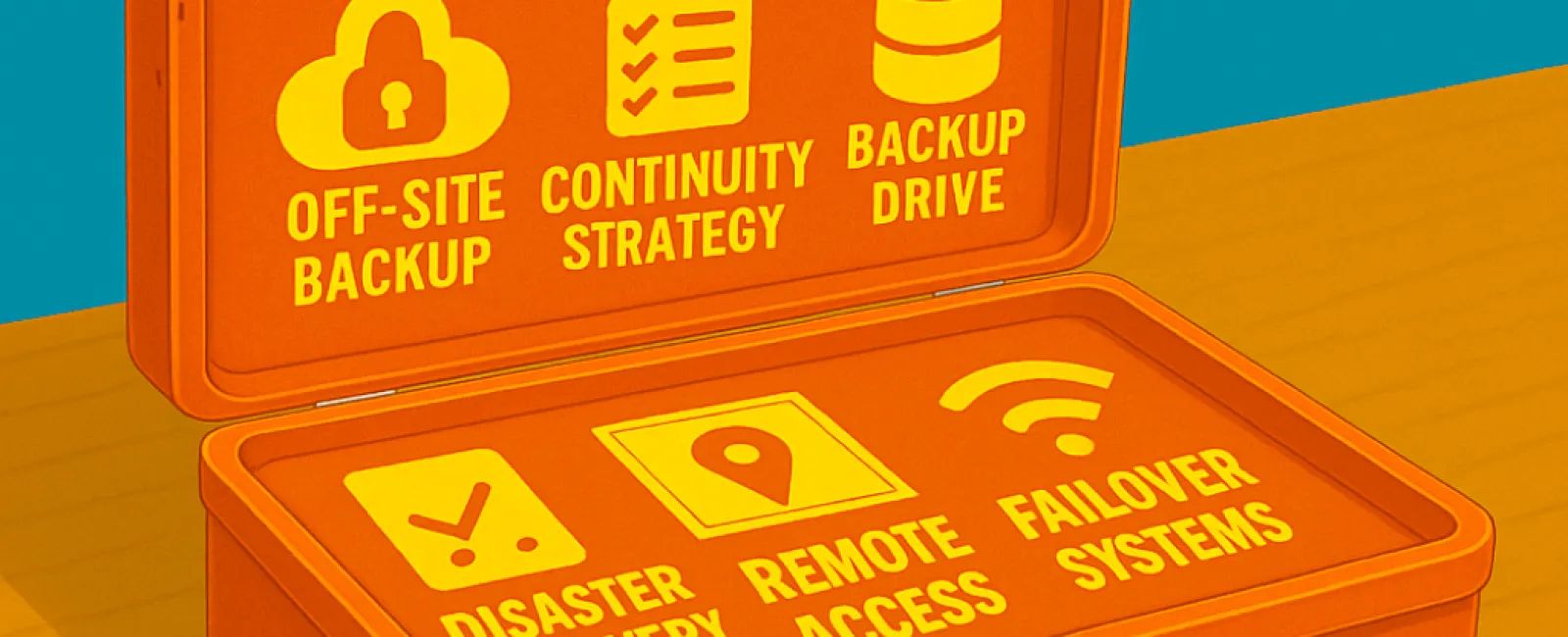July 28, 2025
Unexpected power failures, cyberattacks, hardware malfunctions, and natural calamities often strike without notice, posing severe threats to small businesses. Many believe simply having backups is sufficient, but restoring files alone doesn't guarantee your business stays functional. Without access to critical systems, support for remote operations, and effective communication with your team and clients, even brief interruptions can escalate into prolonged challenges. A dependable IT partner offers more than backups—they deliver a comprehensive strategy to keep your business operational under any circumstance.
Backups Are Just the Start—True Resilience Requires Continuity
Backups are undeniably important, but they represent only one piece of the puzzle. What you truly need is a robust business continuity plan—a forward-thinking approach that guarantees your operations persist during and after any major disruption.
When your systems fail, data becomes unreachable, or your workplace is compromised, relying solely on local backup files offers little relief. Without a swift, well-defined recovery plan, your business faces significant risks including lost revenue, damaged reputation, and regulatory non-compliance.
Understanding the Crucial Difference: Backups vs. Business Continuity
Many businesses overlook this critical distinction:
● Backups enable data restoration.
● Continuity ensures uninterrupted operations regardless of the situation.
An effective continuity plan addresses essential questions like:
● What is our recovery time objective?
● Where will the team operate if the office becomes inaccessible?
● Which systems are critical for mission success?
● Who holds the responsibility to initiate the recovery process?
Key components of this strategy include:
● Encrypted, off-site, and immutable backups
● Clearly defined recovery time and point objectives (RTO/RPO)
● Preparedness for remote work scenarios
● Redundant infrastructure and automatic failover systems
● Regular disaster recovery drills and simulations
If your IT provider cannot confidently guide you through these essentials, consider yourself unprotected rather than fortunate.
Could This Happen to Your Business?
This is not mere speculation or fear-mongering. These disasters have real-world impacts. Recent examples include:
● Florida hurricanes forced hundreds of businesses to halt operations, especially those lacking cloud accessibility.
● North Carolina floods wiped out on-site servers, erasing critical records and invoices.
● California wildfires destroyed entire offices in the Pacific Palisades, many without effective off-site recovery plans.
● Numerous small businesses struck by ransomware attacks have discovered their backups were either corrupted or untested.
Disasters don't discriminate by business size—they affect companies just like yours every day.
Essential Questions to Ask Today
If disaster strikes tomorrow, will your business continue operating?
Consult your IT provider and ask:
● How quickly can we recover from a ransomware attack?
● Are our backups regularly tested and comprehensive?
● What is the contingency plan if a flood or fire renders our office unusable?
● Is our continuity strategy fully compliant with relevant industry standards?
● Can we maintain client service if our team must operate remotely?
If you're not completely confident in these answers, your business could already be vulnerable.
Disasters Are Inevitable. Downtime Doesn't Have To Be.
While you can't prevent every outage, storm, or cyberattack, you can control how your business responds.
A competent IT provider helps you bounce back.
An exceptional one ensures your business never misses a beat.
Curious about your current preparedness?
Click Here or call us at 720-449-3379 to schedule your FREE 15-Minute Discovery Call and let's safeguard your business against downtime.




